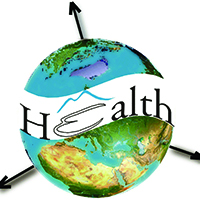Spatial association between the incidence rate of COVID-19 and poverty in the São Paulo municipality, Brazil

All claims expressed in this article are solely those of the authors and do not necessarily represent those of their affiliated organizations, or those of the publisher, the editors and the reviewers. Any product that may be evaluated in this article or claim that may be made by its manufacturer is not guaranteed or endorsed by the publisher.
Authors
In this article, we investigated the spatial dependence of the incidence rate by COVID-19 in the São Paulo municipality, Brazil, including the association between the spatially smoothed incidence rate (INC_EBS) and the social determinants of poverty, the average Salary (SAL), the percentage of households located in slums (SLUMS) and the percentage of the population above 60 years of age (POP>60Y). We used data on the number notified cases accumulated per district by May 18, 2020. The spatial dependence of the spatially smoothed incidence rate was investigated through the analysis of univariate local spatial autocorrelation using Moran's I. To evaluate the spatial association between the INC_EBS and the determinants SAL, POP>60Y and SLUMS, we used the local bivariate Moran's I. The results showed that the spatially smoothed incidence rate for COVID-19 presented significant spatial autocorrelation (I = 0.333; P<0.05), indicating that the cases were concentrated in clusters of neighbouring districts. The INC_EBS showed a negative spatial association with SAL (I = -0.253, P<0.05) and POP>60Y (I = -0.398, P<0.05). We also found that the INC_EBS showed a positive spatial association with households located in the slums (I = 0.237, P<0.05). Our study concluded that the households where the population most vulnerable to COVID-19 resides were spatially distributed in the districts with lower salaries, higher percentages of slums and lower percentages of the population above 60 years of age.
How to Cite

This work is licensed under a Creative Commons Attribution-NonCommercial 4.0 International License.
PAGEPress has chosen to apply the Creative Commons Attribution NonCommercial 4.0 International License (CC BY-NC 4.0) to all manuscripts to be published.













